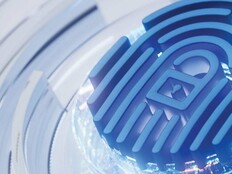The Top 3 Higher Ed Trends of 2017
Considering their cultures of innovation and evolution, it’s not shocking that universities made big strides this year with their use of groundbreaking technologies.
In a survey of IT decision-makers in higher education, Unit4 found that 81 percent of universities have invested in technology to benefit students and 73 percent reorganized their IT structures in the last two years to support a student success initiative.
The importance placed on data analytics programs was a driving force of these investments, with 60 percent of universities using data automation to inform them of at-risk students.
With data in mind, more universities turned to Internet of Things technologies to collect a greater wealth of information and create efficiency.
And, as with the past few years, security permeated all aspects of higher ed technology as universities and companies stepped up to boost threat prevention.
These were the technology trends that shaped 2017.
SIGN UP: Get more news from the EdTech newsletter in your inbox every two weeks!
1. Data Analytics Proves Its Efficacy
Over the course of the past few years, universities have made great use of data analytics to boost retention rates — and for good reason. A recent report from RPK Group found that colleges could earn $1 million annually if they improve retention rates.
In 2017, colleges and researchers alike explored other uses for data. For example, institutions such as Saint Louis University and Georgia State University found demographic information to be a great way to shape admissions tactics, as well as student services for success.
Mark Becker, the president of Georgia State, told Times Higher Education that data allowed their advising teams to monitor students closely and support them with the just-in-time help, something unheard of at such a large university.
“Our system right now is doing what professors at a very small college would do, which is keep an eye on the students,” Becker said in the article. “When they see something happening, [they] find a way to intervene.”
Researchers from the Data Quality Campaign also noted this year that using data analytics to track student success in teacher training programs at universities is a great way to pinpoint needed program changes.
Through creating this data-fueled feedback loop, university programs and state education leaders can ensure that student-teachers are prepared for the classroom.
In addition to using data to make more informed decisions, universities are also stepping up to offer educational programs that teach students how to work with data themselves.
For the second year in a row, job website Glassdoor named data scientist the top career because of salary, number of job openings and satisfaction rating, and universities have responded by crafting programs to prepare students for these careers.
Southern Connecticut State University, for example, offers students hands-on internships with local businesses so they can flex their skills with IBM Watson. With this tool, the students are able to adapt quickly and learn to use data to solve real problems.
2. IoT Brings New Efficiencies
No longer just in the realm of emerging technology, Internet of Things devices came to campuses — and the rest of the world — in a big way in 2017. So much so that Cisco’s recent Visual Networking Index predicts that the total number of internet-connected devices will be three times the world’s population by 2021.
IoT sought to create efficiencies on campus in everything from student services to facility management.
At the University of Nebraska-Lincoln, new IoT kiosks, which let students print from any device — cloud account or USB — replaced traditional printing solutions when several computer labs closed. The kiosks were integral to offering a near 24-hour solution for student printing needs.
Smart building technology lets Carnegie Mellon University’s facilities teams capture data on lighting, security and temperature control to streamline building management. With some help from IBM technology, CMU has made big gains in energy conservation and cost savings.
IoT has even made its mark on collegiate athletics by engaging millennial fans at football stadiums. In addition to expanding stadium Wi-Fi to allow fans to capture every moment on social media, Texas A&M University is also testing out beacon technology to offer up entertainment and collect valuable management data.
“We’ve got a beacon located in a particular area to help us see information on queue management and crowd flow,” said Matthew Almand, the Texas A&M network architect in charge of the stadium project. “Our chokepoints for getting around the stadium don’t stay the same, so we’re anticipating if we had a more pervasive beacon deployment it would help us all strategize and not be purely reactionary.”
3. With Great Tech, Comes Great Security Concerns
Advancements in IoT and data analytics opened several doors for higher ed institutions, but they only compounded security concerns, leaving IT staffs searching for the best ways to keep their additional devices and wealth of new information safe in an increasingly troubling cyber environment.
In the first half of 2017 alone, data breaches in the education sector increased by 103 percent. As more universities made use of innovative technologies, they also made changes to their security strategies.
After suffering a data breach a few years prior, Arkansas State University sought to keep its valuable information secure by putting up blocks each step of the way. Its layered approach to security includes a next-generation firewall from Palo Alto Networks that boosts network visibility and Carbon Black protection software that blocks network users from downloading unapproved applications.
As threats continue to evolve in higher education, the tools created have also evolved this year. Data giant Splunk created a new tool that combines data analytics and machine learning to help detect ransomware before it does any damage.
“[Splunk] is doing a lot of the legwork in determining what’s expected and what’s strange,” Mary Carp, a data security analyst at Northwestern University, said in an EdScoop article.
As it has been for the last three years, security was listed as the top issue for the incoming year by EDUCAUSE, so it’s likely that new tools and ways to protect university networks and data will continue to pop up.









